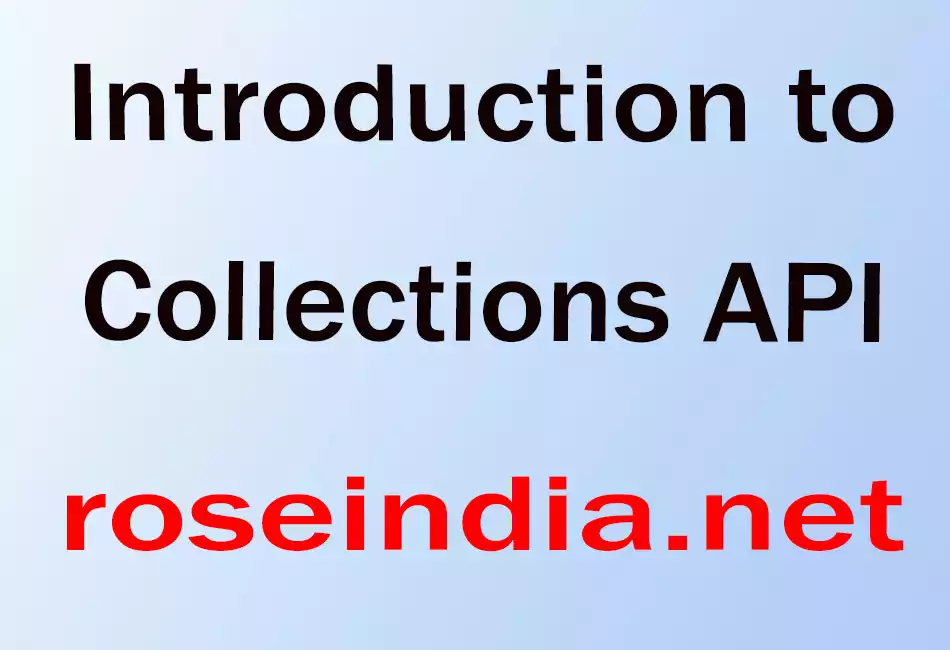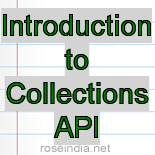A collection is simply an object that groups multiple elements into a single unit. It is also called as a container sometimes.

Introduction to Collections API
As
the name indicates, collections
is a group of objects known as its elements.
Basically it is a package of data structures that includes ArrayLists,
LinkedLists, HashSets,
etc. A collection is simply an object that groups multiple elements into a
single unit. It is also called as a container sometimes. It is used to store,
retrieve, manipulate, and communicate aggregate data. Typically, it represents
data items that form a natural group and allows duplicate elements while others
do not. It consists of both ordered and unordered elements. There is no direct
implementation of this interface however SDK provides implementations of
more specific sub interfaces like Set and List. The manipulation and passing of
collections is done by this interface.
The Two "standard" constructors should be provided by all the general-purpose Collection implementation classes. These classes typically implement Collection indirectly through one of its sub interfaces.
-
Void (no arguments) constructor which creates an empty collection.
-
Constructor with a single argument of type Collection, which creates a new collection with the same elements as its argument.
The
user can copy any collection using void constructor to produce an equivalent
collection of the desired implementation type. As interfaces cannot contain
constructors there is no way to enforce this convention. However all of the
general-purpose Collection implementations comply this in the Java platform
libraries.
The Java Collections API:
Java Collections of API (Application Programming Intreface) Consists of several interfaces, and classes that implement those interfaces, within the java.util package. It provides tools for maintaining a data container of objects. Each primitive value must be wrapped in an object of its appropriate wrapper class (Boolean, Character, Integer, Double, etc.) to maintain a collection of primitive data. It is an alternative tool to the creation of custom data structures.
You must be familiar with collections if you have worked with Java programming language . Collection implementations included Vector, Hashtable, and array are available in earlier (pre-1.2) versions of the Java platform, but those versions do not include the collections framework. Hence the new version of the Java platform contains the collections framework.


